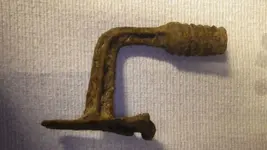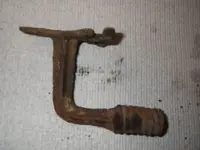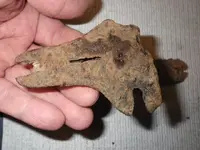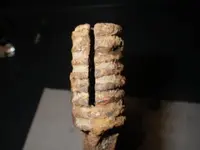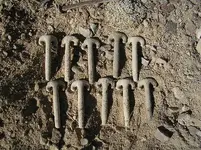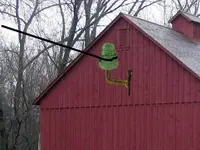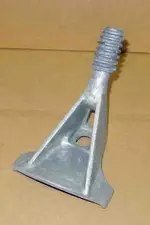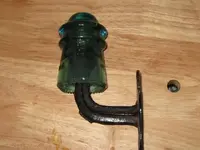Usually, precise size-measurement is crucially needed for coming up with the correct ID of an object in a photo. (For example, a photo does not reveal whether a ball is marble-sized, baseball-sized, or basketball-sized.)
But in this case, your fingers being in the photo helps me estimate that the object is indeed a metal mount for a telephone/telegraph/electrical wire insulator (which is usually made of glass or ceramic material).
The coarse (large-gauge) threading is typical for that kind of insulator-mount. The deep slot going down through the threaded mounting-rod's center allows it to "flex" so it won't cause the glass or ceramic insulator to crack -- and it keeps the insulator tightly screwed on.
As worldtalker indicated, many telegraph-pole insulator mounting-rods were made of wood. However, some were definitely made of metal. Here's a photo showing one type of metal mounting-rods. its shape causes it be be nicknamed a "rams-horn" mount.



